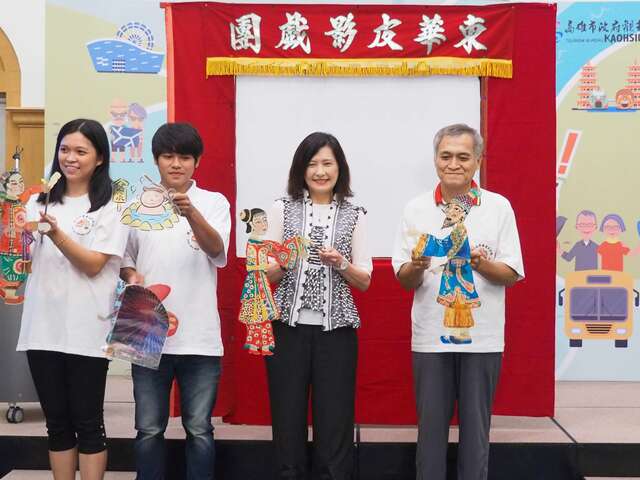Donghua Shadow Puppet Theatre Introduction
Donghua Shadow Play Troupe has a history of two hundred years. Originally named "Dexing Troupe," it is the most famous local cultural asset of Dasha Township. The fifth-generation descendant Zhang Decheng (deceased) was elected as one of the first National Master of Folk Arts alongside Li Tianlu in 1989, receiving the honor of a national treasure. Residents from the "Puppet Zhang" Zhang family on Sanmin Road are well aware of it. Following "Puppet Chuanzi" Zhang Chuan, the artistic talents of the Zhang family have been widely recognized through Zhang Jiao and Zhang Decheng. In the era before televisions, shadow puppetry was the most popular form of folk entertainment where adults and children gathered together to watch the performances, listen to folk tales, and enjoy the unique light and sound effects of shadow plays during farming seasons. Under the promotion of Zhang Decheng, the Donghua Shadow Play Troupe toured various regions of Taiwan in the 1940s, making a significant impact and even performing in the United States, the Philippines, Hong Kong, South Korea, Japan, and others, contributing greatly to national diplomacy. Zhang Decheng passed away in 1995, and his son Zhang Kuo-guo continued his father's wish of "passing history through art." In recent years, they have worked closely with local cultural centers to promote the cultural heritage of shadow puppetry. Origins and Heritage: More than two thousand years ago, Emperor Wu of Han mourned the death of his beloved concubine and instructed a Taoist priest to summon her spirit using shamanic rituals. The priest set up a large curtain in the palace, using smoke and dim light to project shadows on the curtain, claiming they were the presence of her spirit, providing comfort to the emperor. Accompanied by such a beautiful legend, shadow puppetry has been passed down through China to this day. Chinese shadow play is one of the earliest performance arts that employs "light" and "shadow" for transformation effects, combining rich dreamlike elements with painting, sculpture, music, and theater. Historical records indicate that the performance style was mature by the Northern Song dynasty at the latest. From the Song to the Ming and Qing dynasties, shadow puppetry remained popular and beloved by the public. Shadow puppetry is a flat art form, with each puppet's design incorporating various sculpting techniques to create focal points. With the manipulation of performers, along with singing, narration, and the accompaniment of gongs and drums, the story unfolds, presenting a cleverly adjusted two-dimensional space to create a shadow puppet world that feels both real and illusory. The Donghua Shadow Play Troupe, passed down through generations, is the oldest shadow play troupe in Taiwan. Its uniqueness lies in adapting to the times, not limited to ancient traditional techniques but also incorporating improvements, such as enlarging the shadow windows, increasing the puppet sizes, enhancing colors, and achieving flexible articulation for advanced skills and special lighting effects. Besides being well-known in southern Taiwan, from the 1940s to the 1950s, this troupe was the only one that toured and successfully performed in theaters across the province. They were invited to perform in Japan, the Philippines, Hong Kong, and the United States. Due to the immense contributions of the fifth-generation leader Mr. Zhang Decheng to shadow puppetry, he was awarded the first Folk Arts Legacy Award in 1985 and became the first national master of folk arts in 1989. Currently, the sixth-generation leaders Mr. Zhang Kuo-guo and Mr. Zhang Yi-guo have taken over the troupe since 1987 and are dedicated to preserving and promoting Taiwan's shadow puppetry. In addition to maintaining tradition, they also add creativity, performing with flexible and rhythmic techniques that have received great acclaim from audiences. They have received the Outstanding Arts Legacy Golden Lion Award, the National Top Ten Outstanding Youth Legacy Award, and are the first in Taiwan's important folk arts to graduate from training in shadow puppetry.































